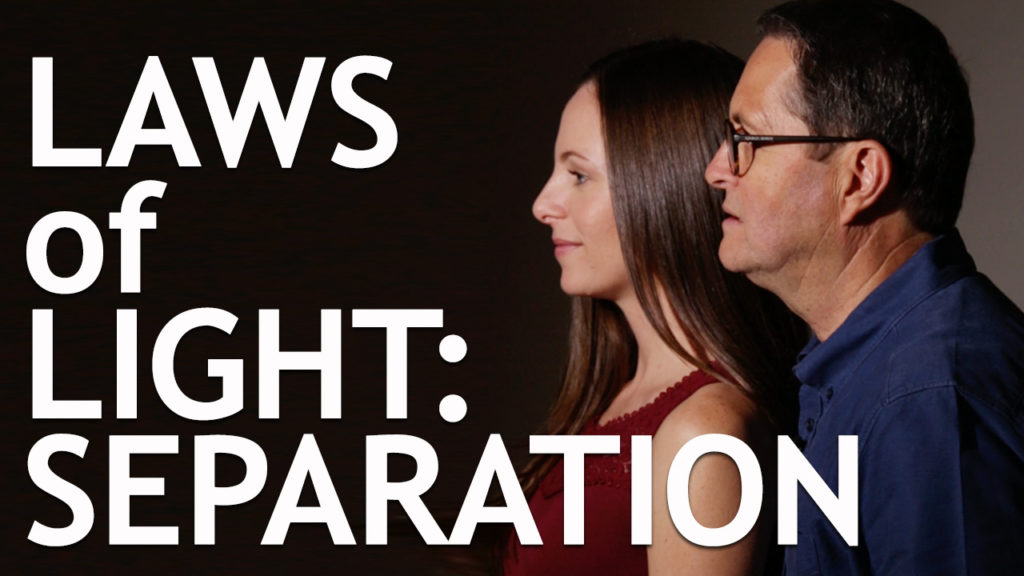Hi, this is Jay P. Morgan. Today on The Slanted Lens we’re continuing our exploration of The Laws of Light with our next segment- separation.

Today on The Slanted Lens we’re looking at a fundamental principle of lighting, and that is how to separate your subject from your background. We create that separation using light. The first and very simple way we’re looking at it using a single light to light our model and our background at the same time.
With that single light we’re lighting her face, and the background behind her. The light hits the background on the opposite side that it hits her face. So on her highlight side, the background is darker. On her shadow side, the background is lighter. Both of these then create separation. You can place that single light at any angle to create the effect you’d like.
Our second option is to add another light to the background.
The first method I showed you works only when the background is close to the background. This method works better when the background is further away.Third, we can add a rim light to create separation between our model and our background. You can add it directly behind your subject, or you can move it to the side and light her that way.
We can also then start combining these to create even more separation. We can add a background light and a rim light. The viewer is comfortable with this because it looks like the rim light is coming from the background light.
When we’re adding more than one person to the frame, we want to use the same principles we used when lighting the sphere, cube, and cylinder. Placing your subjects so that the highlight of one is in the shadow of the other.
Next, we’ll create a silhouette very easily by just turning off the key light while keeping light on the background.
And just as easy, adding a colored gel to your background light. This really helps to create the illusion of depth to our background.
Something important to remember when using gels is that if you let white light in it begins to kill the color. To keep it colored strongly you must have the gel cover the entire light.
So there’s a look at how lighting creates separation. In next month’s lesson we’ll look at how lighting creates emotion. Until then, keep those cameras rollin’ and keep on clickin’.

